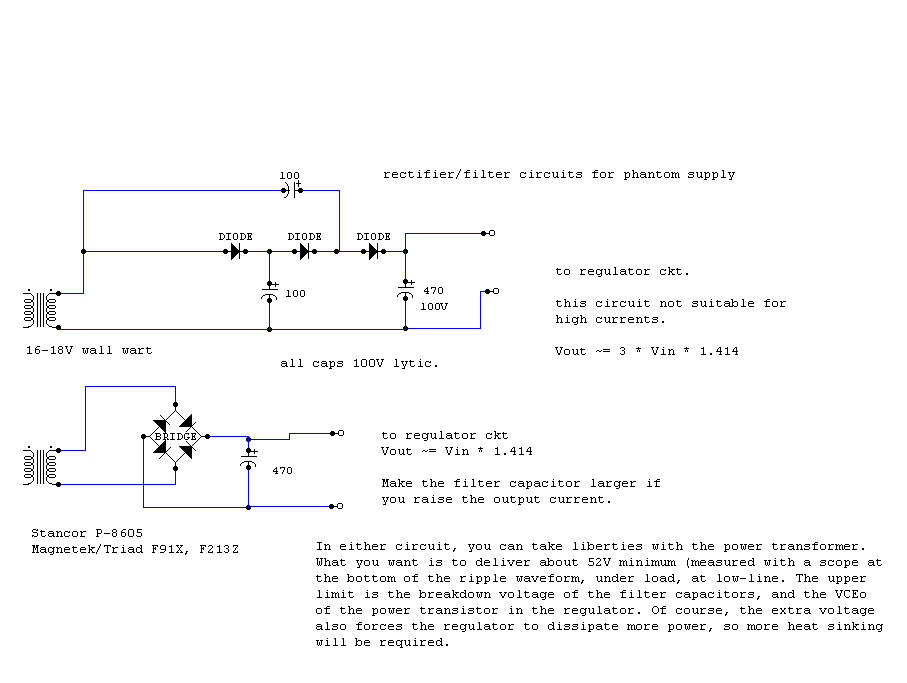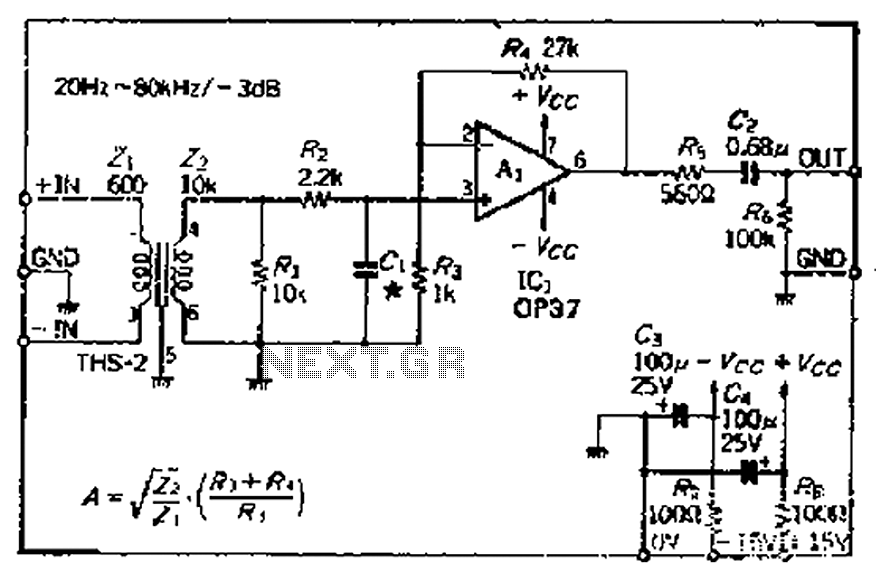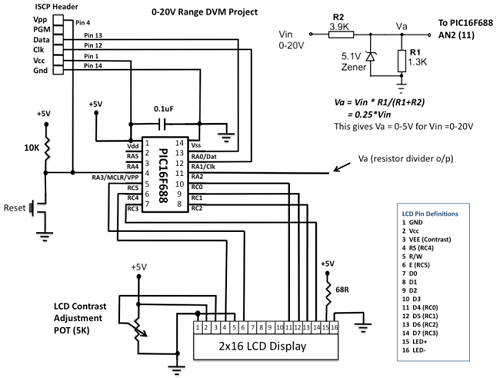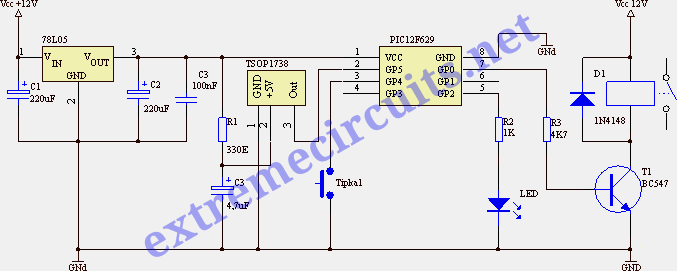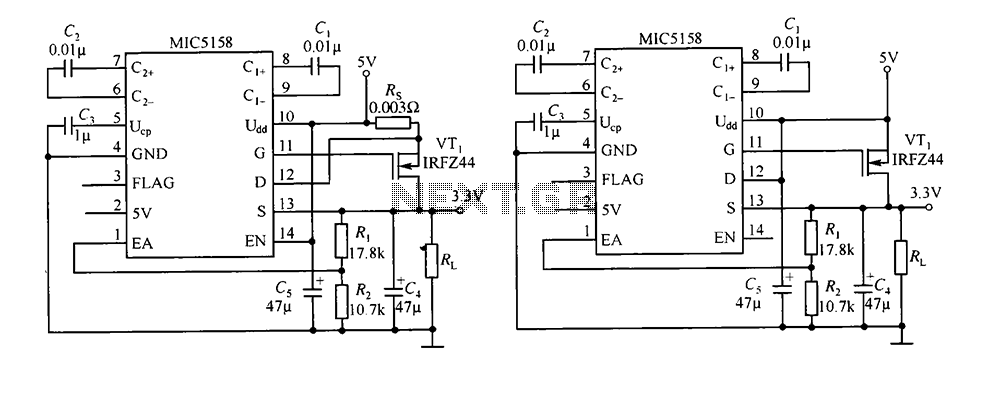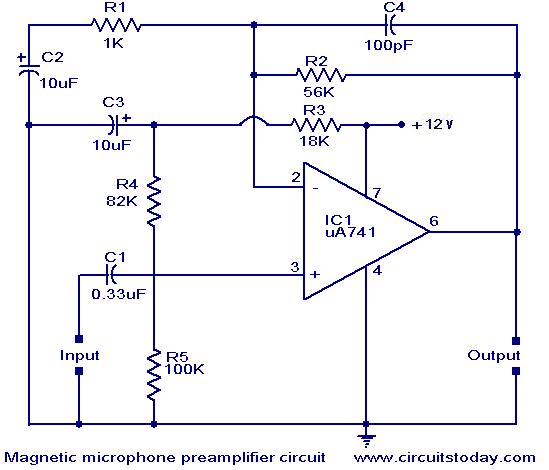
Portable Mic Pre-amp

Designed by Don Tillman, this guitar preamp circuit is intended for individuals who prefer not to use operational amplifiers (op-amps). It features a discrete JFET preamp design utilizing the 2N5457 as the primary component. The circuit exhibits low noise, low distortion, low feedback, and handles overloads gracefully, all while maintaining a compact size. The overall gain is approximately 3 dB (2X). The circuit operates at about half the power. Additionally, a simple microphone preamplifier circuit based on a single IC, the LM358, is presented. This circuit is straightforward, cost-effective, and easy to construct. The component parts list includes: R1, R3, R4 = 10K; R2 = 1K; R5 = 100K-1M Potentiometer; C1 = 0.1 µF; C2 = 4.7 µF/16V; IC1 = LM358 dual op-amp, single supply; and Mic = Electret Microphone. This circuit diagram represents a mic condenser amplifier, which is a low-cost and compact solution that delivers good-quality audio output of 0.5 watts at 4.5 volts. It can be utilized in low-power transmitters, packet radio receivers, intercoms, and walkie-talkies. Transistors T1 and T2 form the microphone preamplifier. Furthermore, a circuit diagram for a tube mic preamplifier using a 12AX7 is included, which requires intermediate to advanced skills for assembly. All capacitors with a value of 33 µF are rated at 16V, while others are rated at 50V unless specified otherwise. Resistors marked with "#" have a tolerance of 1%. Additionally, a dynamic microphone compressor circuit is described, which, despite its simplicity, yields satisfactory audio output quality. The first transistor acts as a microphone preamplifier, the second transistor functions as a buffer, and the third transistor is part of the feedback circuit. Lastly, there is a portable, 230V high-power incandescent electric lamp flasher circuit diagram, which operates as a double flasher (alternating blinker) capable of managing two different 230V AC loads (bulb lamps L1 and L2). This circuit is entirely transistorized and battery-powered, with a free-running oscillator circuit implemented using two low-power, low-noise transistors.
The guitar preamp circuit designed by Don Tillman represents a significant advancement for musicians seeking alternatives to traditional op-amp designs. The use of the 2N5457 JFET allows for a high-quality audio signal with minimal interference, making it ideal for live performance and recording applications. The circuit's low noise and distortion characteristics ensure that the integrity of the audio signal is preserved, while the ability to handle overloads gracefully adds to its reliability.
The inclusion of a simple microphone preamplifier circuit based on the LM358 dual op-amp allows for versatility in audio applications. The straightforward design facilitates easy assembly, making it accessible for hobbyists and professionals alike. The specified component values ensure optimal performance, with the electret microphone providing a clear audio input.
For those interested in tube technology, the 12AX7 tube mic preamplifier circuit offers a more complex yet rewarding construction project. The specified capacitor ratings and resistor tolerances highlight the importance of component selection in achieving the desired audio quality. This circuit is suited for individuals with intermediate to advanced skills, providing an opportunity to explore the nuances of tube amplification.
The dynamic microphone compressor circuit serves as an excellent example of how simple circuitry can produce high-quality audio results. The role of each transistor is critical in maintaining signal integrity and achieving the desired compression effect, making it a valuable tool for audio engineers and musicians.
Lastly, the portable 230V incandescent lamp flasher circuit demonstrates practical applications of transistor technology in managing AC loads. Its ability to operate as a double flasher enhances its functionality in various lighting scenarios, showcasing the versatility of transistor-based designs in both audio and lighting applications.Designed by Don Tillman, this guitar pre-amp circuit design is dedicated for people who don`t like op-amps. This circuit is a discrete JFET pre-amp design, use 2N5457 as the main component. It has low noise, low distortion, low feedback, overloads gracefully, is small, etc. Overall gain is 3db (2X) or so. It uses about 1/2. Here the simple audio mic pre amplifier circuit based on single IC LM358. The circuit is very simple, inexpensive and easy to built. Component Parts List: R1, R3, R4 = 10K R2 = 1K R5 = 100K-1M Potensiometer C1 = 0. 1uF C2 = 4. 7uF/16V IC1 = LM358 dual op-amp single supply Mic = Electret Microphone. This is the circuit diagram of mic condenser amplifier. The low-cost and compact mic condenser audio amplifier described right here is deliver good-quality audio of 0. 5 watts at 4. 5 volts. It could possibly be applied as a part of low-power transmitters, packet radio receivers, intercoms and walkie-talkies.
Transistors T1 and T2 form the mic preamplifier. . The following diagram is the circuit diagram of tube mic pre amplifier 12AX7. This circuit is little hard to built. You must have an intermediate or advanced skills to build this circuit. All capacitors with value of 33uF are 16V, while the all others are 50V unless marked otherwise. Resistors marked with "#" are 1%. The circuit below is a Dynamic Mic Compressor circuit is simple but the results are quite satisfactory. Audio output sounded outstanding. The principle of this circuit is very simple, the first transistor is used as Mic Pre-Amp. Then a second transistor used as a buffer. And the third transistor is a feedback circuit. Supply voltage. This is a portable, 230V high-power incandescent electric lamp flasher circuit diagram. It is actually basically a double flasher (alternating blinker) which could manage two different 230V AC loads (bulb lamps L1 and L2).
The circuit is completely transistorised and battery-powered. The free-running oscillator circuit is realised working with two low-power, low-noise transistors T1 and. 🔗 External reference
The guitar preamp circuit designed by Don Tillman represents a significant advancement for musicians seeking alternatives to traditional op-amp designs. The use of the 2N5457 JFET allows for a high-quality audio signal with minimal interference, making it ideal for live performance and recording applications. The circuit's low noise and distortion characteristics ensure that the integrity of the audio signal is preserved, while the ability to handle overloads gracefully adds to its reliability.
The inclusion of a simple microphone preamplifier circuit based on the LM358 dual op-amp allows for versatility in audio applications. The straightforward design facilitates easy assembly, making it accessible for hobbyists and professionals alike. The specified component values ensure optimal performance, with the electret microphone providing a clear audio input.
For those interested in tube technology, the 12AX7 tube mic preamplifier circuit offers a more complex yet rewarding construction project. The specified capacitor ratings and resistor tolerances highlight the importance of component selection in achieving the desired audio quality. This circuit is suited for individuals with intermediate to advanced skills, providing an opportunity to explore the nuances of tube amplification.
The dynamic microphone compressor circuit serves as an excellent example of how simple circuitry can produce high-quality audio results. The role of each transistor is critical in maintaining signal integrity and achieving the desired compression effect, making it a valuable tool for audio engineers and musicians.
Lastly, the portable 230V incandescent lamp flasher circuit demonstrates practical applications of transistor technology in managing AC loads. Its ability to operate as a double flasher enhances its functionality in various lighting scenarios, showcasing the versatility of transistor-based designs in both audio and lighting applications.Designed by Don Tillman, this guitar pre-amp circuit design is dedicated for people who don`t like op-amps. This circuit is a discrete JFET pre-amp design, use 2N5457 as the main component. It has low noise, low distortion, low feedback, overloads gracefully, is small, etc. Overall gain is 3db (2X) or so. It uses about 1/2. Here the simple audio mic pre amplifier circuit based on single IC LM358. The circuit is very simple, inexpensive and easy to built. Component Parts List: R1, R3, R4 = 10K R2 = 1K R5 = 100K-1M Potensiometer C1 = 0. 1uF C2 = 4. 7uF/16V IC1 = LM358 dual op-amp single supply Mic = Electret Microphone. This is the circuit diagram of mic condenser amplifier. The low-cost and compact mic condenser audio amplifier described right here is deliver good-quality audio of 0. 5 watts at 4. 5 volts. It could possibly be applied as a part of low-power transmitters, packet radio receivers, intercoms and walkie-talkies.
Transistors T1 and T2 form the mic preamplifier. . The following diagram is the circuit diagram of tube mic pre amplifier 12AX7. This circuit is little hard to built. You must have an intermediate or advanced skills to build this circuit. All capacitors with value of 33uF are 16V, while the all others are 50V unless marked otherwise. Resistors marked with "#" are 1%. The circuit below is a Dynamic Mic Compressor circuit is simple but the results are quite satisfactory. Audio output sounded outstanding. The principle of this circuit is very simple, the first transistor is used as Mic Pre-Amp. Then a second transistor used as a buffer. And the third transistor is a feedback circuit. Supply voltage. This is a portable, 230V high-power incandescent electric lamp flasher circuit diagram. It is actually basically a double flasher (alternating blinker) which could manage two different 230V AC loads (bulb lamps L1 and L2).
The circuit is completely transistorised and battery-powered. The free-running oscillator circuit is realised working with two low-power, low-noise transistors T1 and. 🔗 External reference
